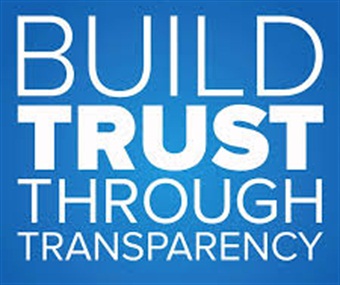Inspire Team Engagement with Dynamic Team Building Speakers
(This is part 2 of a 6-part series about the T.R.U.S.T. model of leadership).
According to a survey by the American Psychological Association, 25% of employees don’t trust their employer and only about half believe their employer is open and upfront with them.
With that in mind, it’s hard to believe that anyone would be able to totally commit to a person or company if they don’t really know the motives or logic behind decisions being made; and how can one truly invest themselves in a company mission when there is a potential distrust due to a lack of transparency?
TRUST is the foundation of leadership. Individuals and organizations cannot reach their full potential and, in the worst-case scenario, are destined for failure without TRUST. The good news is that TRUST can be developed by focusing on the 5 key aspects of the TRUST Leadership Model.
In trusting relationships there are no “hidden agendas”. Each party knows the sincerity of the person they are dealing with and can address a situation in an open and honest way. In business relationships, transparency means “proactively sharing or making available vital information about the company to employees, partners, and possibly even competitors.”
What is the impact of a lack of transparency?
- Without a clear understanding of company goals and objectives, it’s difficult for employees to make decisions that will move the organization towards achieving them.
- Slower decision-making or decisions made for individual achievement rather than for the good of the team or company.
- Limited innovation because individuals don’t have the full picture clearly in mind when facing market or competitive opportunities and challenges.
- Lack of TRUST between employees and leadership and this is a major factor in employee retention or lack thereof.
All these reasons, and more, can be catastrophic to a business from an employee engagement and, most importantly, from a bottom-line financial perspective.
The level of transparency in an organization can be determined through a simple survey or through conversations with employees. These should include questions about company mission and vision, knowledge of challenges, performance expectations and gaining an understanding of how one’s work contributes to the company vision.
At the most basic level, the amount and quality of communication, from all levels of leadership, is directly proportional to the level of transparency seen throughout the organization.
A perceived lack of transparency, although damaging, can be remedied through good, clear, consistent and honest communication.
Some ways to practice transparency include:
- Company-wide town hall meetings to deliver the big-picture message in a way that everyone hears the same message and there is little room for individual interpretation.
- Regularly scheduled one-on-one meetings, between direct reports and their supervisors, where updates are provided regarding issues affecting the business and the individual.
- Internal and external communications that are available to the public regardless of whether it is “good” news or “bad” news.
It is very difficult, if not impossible, for an individual or business to reach full potential without TRUST and being transparent is the first step a leader can take in building TRUST throughout the organization.
Ken Sher is President of Sher Coaching and developer of the “TRUST Leadership Model”. He is dedicated to improving individual and team performance by focusing on Executive Coaching and Career Management. If you are interested in learning how TRUST can improve your career, build your bottom-line, or if your organization’s leadership needs more focus on developing TRUST, please reach out to Ken to schedule a complimentary coaching session, or call him at (215) 262-0528 or email him at Ken@shercoaching.com




